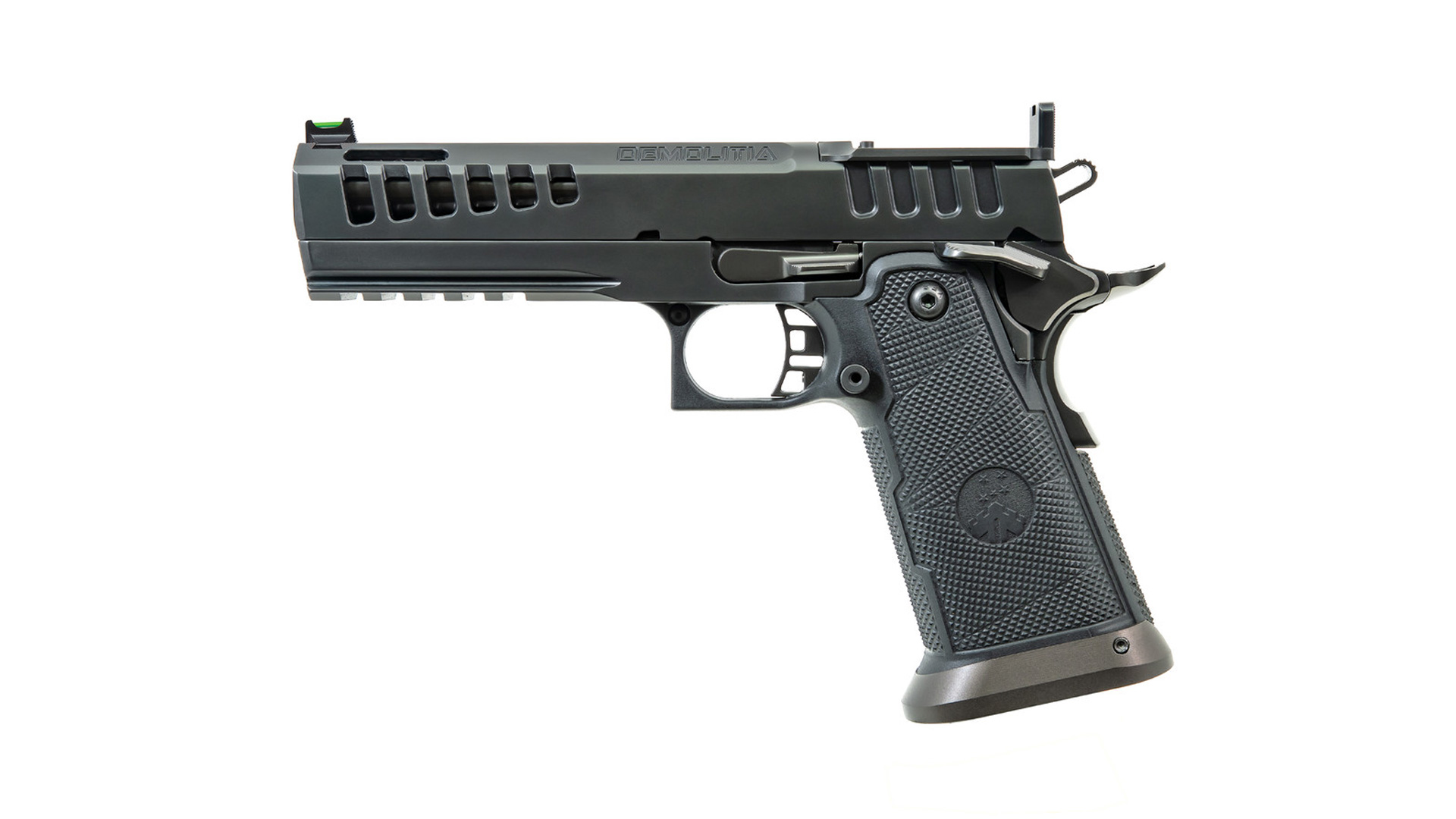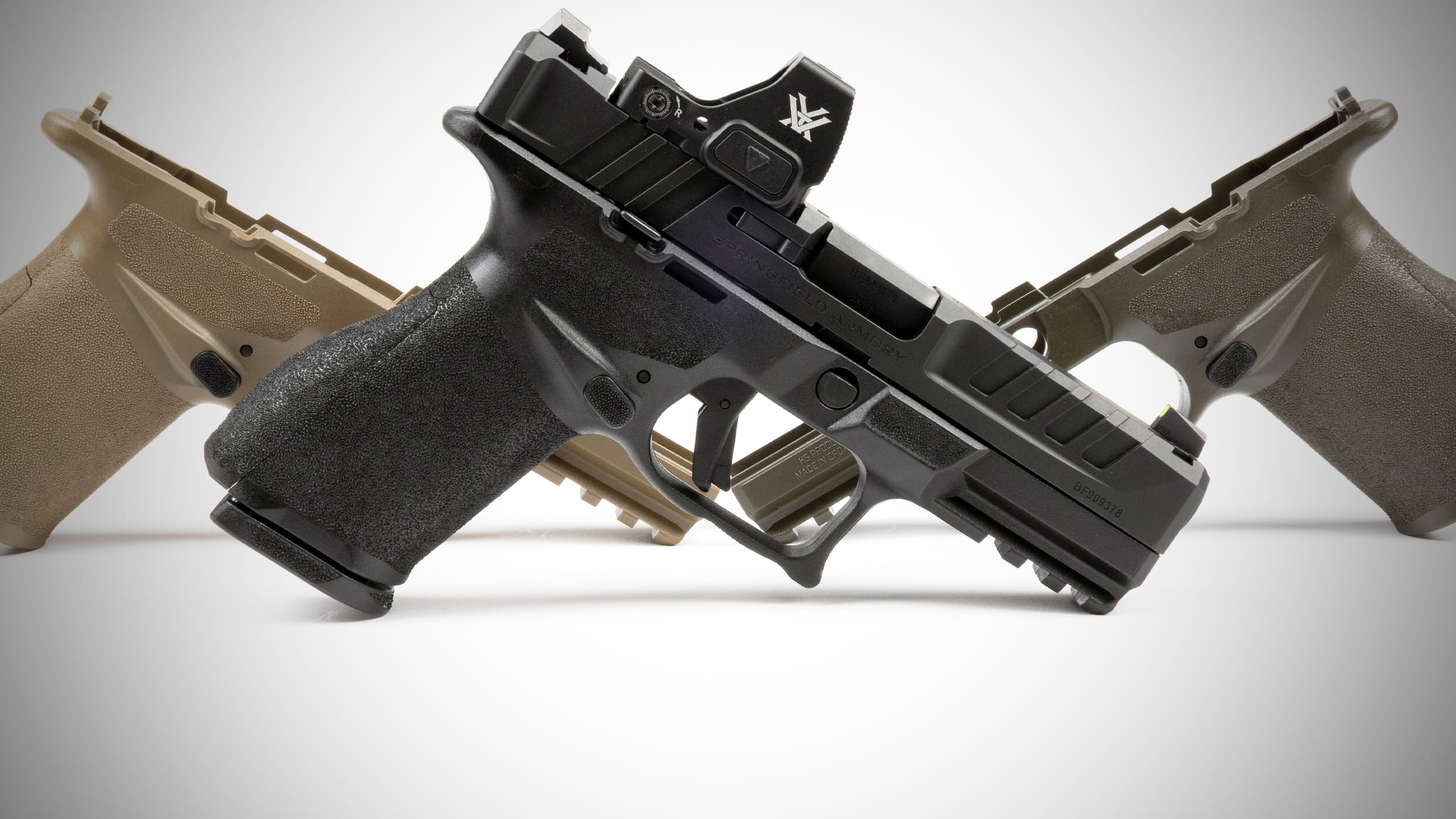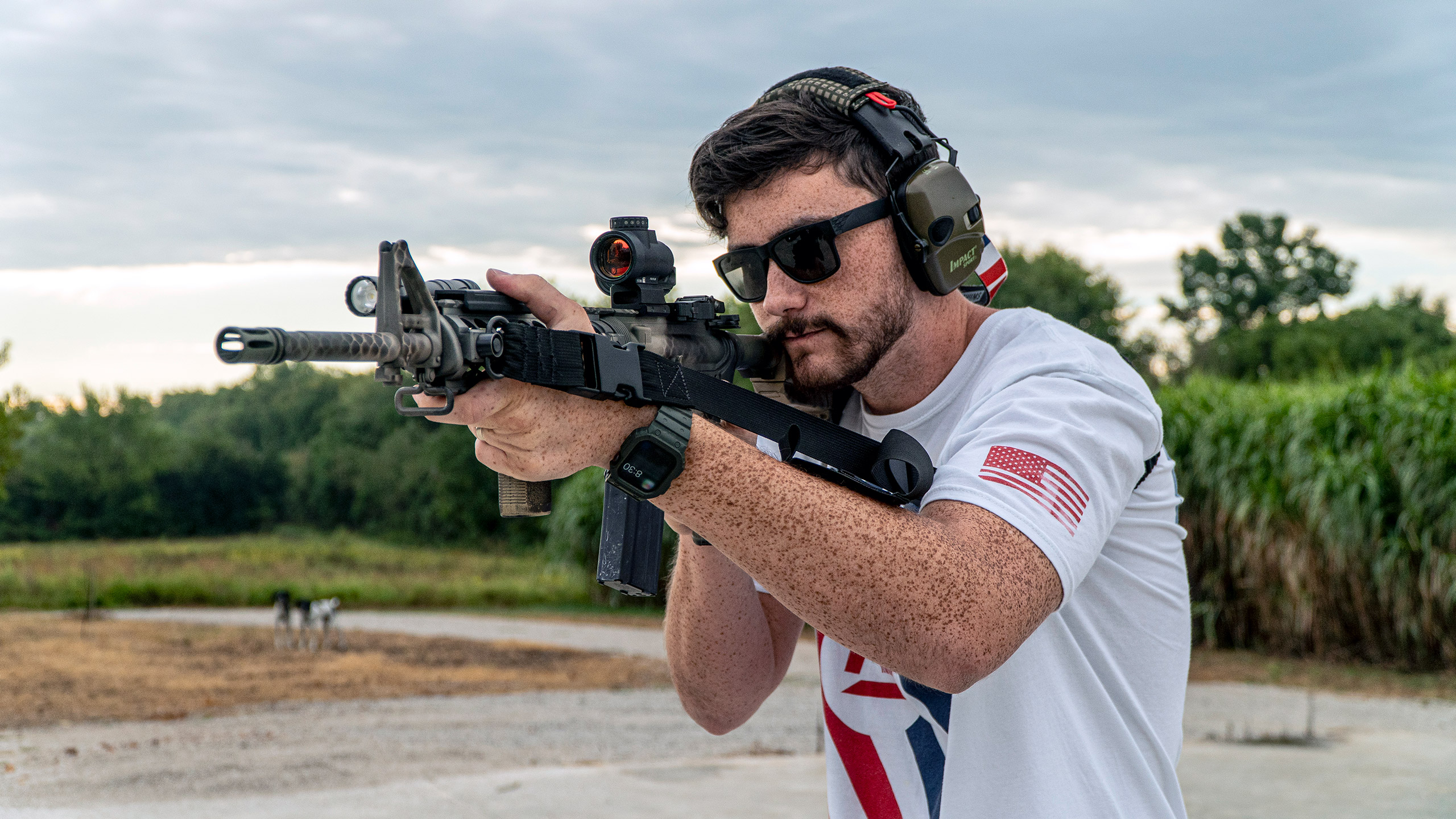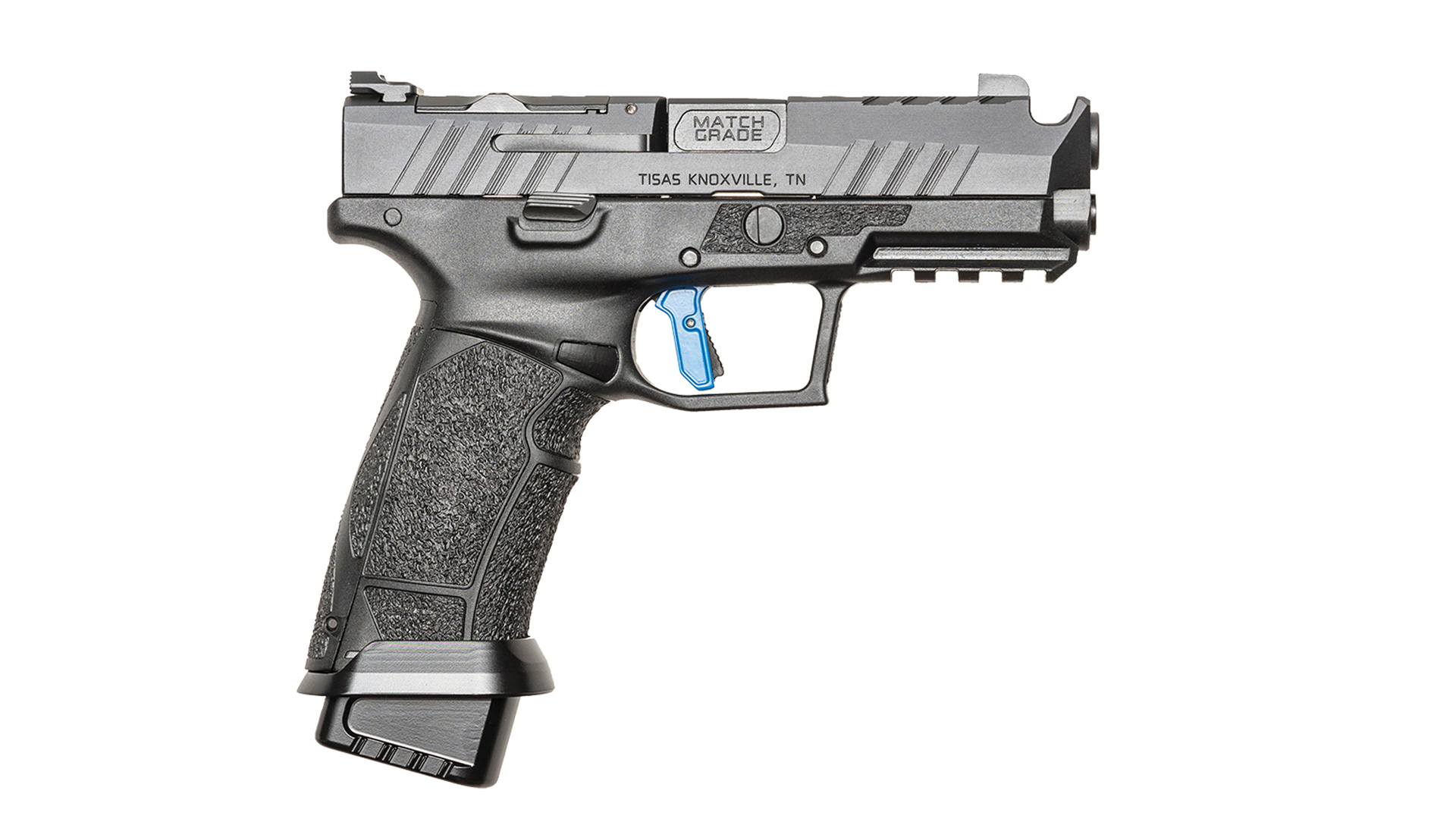Shotguns: Keep the Tip

Sometimes, we have to get back to the basics. When we compartmentalize and scrutinize every aspect of our defensive gear, sometimes we lose sight of the big picture. Here are some tips to help you re-focus your shotgun-shooting skills.
The best shotgun on paper isn’t always the best in your palm.
It’s easy to find shotguns that have superior specs beyond your old Mossberg 500—on paper at least. These new-age scatterguns often feel good and imbue a sense of superiority when you shoulder them. However, because of the shotgun’s tremendous recoil and inherent difficulties with feeding large, square-end shells, many people are seduced into buying a gun that turns out to be less-than-ideal for actual fighting.
For example, there are multiple bullpup-style shotguns currently on the market that hold 15 or so shells despite measuring only about 30 inches long. This sounds great, right? One, the UTS-15, was made by one of my best friends (and former NRA employee), the late Ted Hatfield. The gun’s dual, parallel-magazine-tube design is ingenious, and the pump-action gun functions quite well. But Hatfield, a long-time shotgunner who also made fine English-style double guns, purposely sacrificed fit and feel for looks because he realized that futuristic-looking, tactical-style shotguns sell better to tactical-type people. The UTS-15 was even featured in video games. The trouble is—and as Hatfield would openly admit—shotguns like this are difficult to shoot well, because they are tough to control and, thanks to their straight-line stocks, hard-plastic combs, blocky contours and light weight, they recoil like pure hell. They are tough to shoot in general and nearly impossible to shoot fast. But, don’t take my word for it.
Shoot one of the bullpups or even an AR-style tactical shotgun for yourself. Don’t just shoot it for three or four shots, but rather put a couple boxes of ammo through it. Most people—if they are being honest and haven’t invested their ego into their purchase yet—will not like the experience and therefore will not practice with the shotgun nearly as much as they would with a friendlier-shooting, more ergonomic, traditional-stocked shotgun.
The tip is this: Don’t pick a shotgun based on its catalog specs. Rather, try a few shotgun styles to see which one you shoot best. You’ll be amazed at the differences.
Practice with your shotgun regularly.
I know this tip is as boring as it is obvious, but it’s also one of the most important things a person can do to up the odds of surviving a home invasion. Only with practice can you become fluid with a shotgun so that the subconscious takes over during routine manipulation of the gun as you navigate the high-stakes, high-adrenaline, dynamic situation that could be unfolding in your home.
Frankly, I believe the guy armed with an old double barrel who knows how to use it is much better off than the guy with the latest, ultimate tactical semi-automatic if the latter guy has seldom—if ever—shot it. There is a reason jams most often happen when the shooter is under pressure, and that is because jams are often user-induced. So, as often as possible, take your home-defense shotgun to the range to practice simple moving/shooting/reloading drills. Shoot from cover, practice clearing jams, etc. Quite simply, shoot your shotgun until using it becomes instinctive. If you can fully load and unload your shotgun with your eyes closed, you are well on your way.
Test and practice with the exact ammo you intend to use in a home-defense situation.
Sure, for extended training sessions it’s smart to use low-recoil and/or less-expensive loads. But occasionally, it’s wise to practice with the exact loads you intend to use for self-defense to find out if your shotgun is supremely reliable with them. While this is important for all shotguns and all loads, it’s especially important in semi-automatics that can be finicky in terms of shell preference. The same goes for low-recoil loads that may not have the power to reliably cycle the actions of certain semi-auto shotguns. Do not leave yourself open to surprises when the moment of truth arises.
Know your shotgun’s pattern and point-of-impact at various distances.
The only way to learn this is by actually testing your gun and load. Your goal here is twofold: First, you must know that if you aim for center mass, for example, your pattern’s center will strike center mass. The most desirable shotguns are those where the point-of-aim matches its point-of-impact. If they don’t match, you can either adjust your shotgun’s sights if it has them, install sights or an optic, or adjust the stock’s fit until it does.
Secondly, you should have a good idea of what your load’s pattern looks like at various distances. Rather than taking the ammo company’s word for it, the only reliable way to find this out is to use the exact load you intend to shoot and then firing several rounds on a clean patterning board or silhouette-style target at various distances, such as 5, 10, 15, 25 and 35 yards. The goal is to mentally note how big your pattern is at various distances so you will have a feel for how your shotgun behaves at those distances. If the patterns seem too tight (to me a baseball-size pattern at 10 yards is too tight), try a choke with less constriction or a different load. If they seem too wide (I think a hula-hoop-size pattern at 25 yards is too open), consider using a tighter choke.
Because of a shotgun’s spread (and the fact that you are liable for every projectile that exits your gun), you need to have a good idea of how wide your pattern is at various distances in order to minimize the chance of any stray pellet harming any innocents. While it sounds complicated, it really isn’t if you take the time and effort to familiarize yourself with your shotgun.
Keep your shotgun in one designated place in your house when you are home.
Having your home-defense shotgun in the same, pre-determined location at all times ensures you will know where to access it if needed. In addition to storing it in the same place, make sure it’s in your preferred condition of operation (cruiser-ready, for example) as well as in optimal condition (thoroughly cleaned and properly lubricated). The fewer surprises the better when it comes to home defense.







